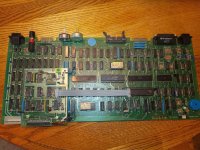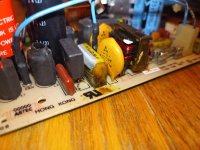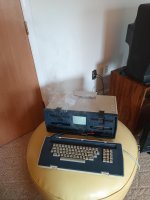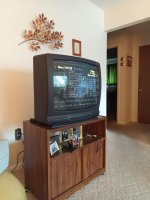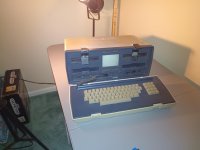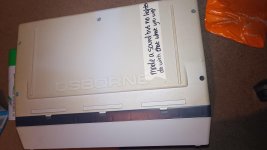jj_darling
New Member
A few years ago a friend of mine gave me an Osborne Executive as a gift knowing that I was interested in vintage computers. It had belonged to his sister's in-laws, and he wasn't sure whether it ran or not. Upon powering it up I found that it ran (fans whirred, caps charged up, power light came on), but the screen never lit up. I was disappointed (always loved that amber glow), so I tried troubleshooting and trying to figure out how to make the thing go-- the external display jumper has been removed, cleaned, and replaced; the internals have been inspected for damage (none visible, at least not in terms of blown up components, missing/corroded connectors, etc); and I connected the composite video out to a TV and verified that the internals function properly (got the boot screen and was able to launch Zork from a disk, although the screen overscanned so much that I couldn't read the command prompt). As far as I can tell, there's nothing physically wrong with it, and I couldn't figure out how to test the display independently from the rest of the internals so I can't verify if it works.
Any tips on how I might proceed here? I can't wait to see the "East of house: There is a mailbox here." prompt on this thing!
Any tips on how I might proceed here? I can't wait to see the "East of house: There is a mailbox here." prompt on this thing!

